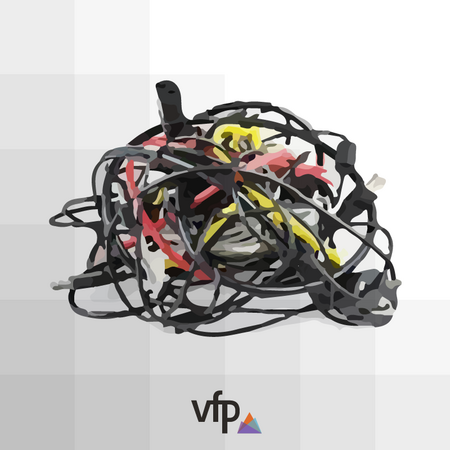by Nana Gregg
Solution Architect, Learning & Development Manager at VFP Consulting
When I moved into my current house I called up the internet company and asked for the highest speed service knowing I’d be working from home. They sent out a box with the equipment, told me to plug it into the wall and I’d be good to go. So I unpacked the box, got it all set up, and waited for my blazing fast speeds on the interwebs.
What I experienced was intermittent service, no service, slow speeds, and frustration.
Turns out, after a few service calls, that the cabling in the attic was a mish-mash of multiple companies adding lines, connectors, extenders, and more. The signal coming to the house was strong but the minute it hit the mess in the attic the resulting signal was less than desirable.
It’s something that can happen to all of us. And not just our cable or internet connections. Every time we decide to add a new application to our tech stack we run the risk of disrupting the data. A connector here, an extender there…
When making your technology decisions, it can pay to poke your head into the attic, take a look at all the cables and spend a little time and effort untangling the wires. Asking yourself as you go – where can we eliminate waste? Where can we strengthen the data flow?
My very favorite thing about the Salesforce platform is that the foundation is built so that you can add functionality without extenders and connectors and extra lines. Native applications & custom functionality, built on platform, means that you aren’t diluting data or risking data leakage. It also streamlines reporting and analytics and governance.
With applications like FinancialForce, you can get rid of all the cables and connections and seamlessly run sales, services, and your back office without all that mess. Oh, I know, sometimes you’ve got to splice in data from an external application due to some reason or another, but the solid foundations of the Salesforce platform make it easier to do that in a structured, organized manner so that the cables in your proverbial attic are organized and traceable.
Once you’ve done that – you can get back to business – at lightning-fast speeds.












